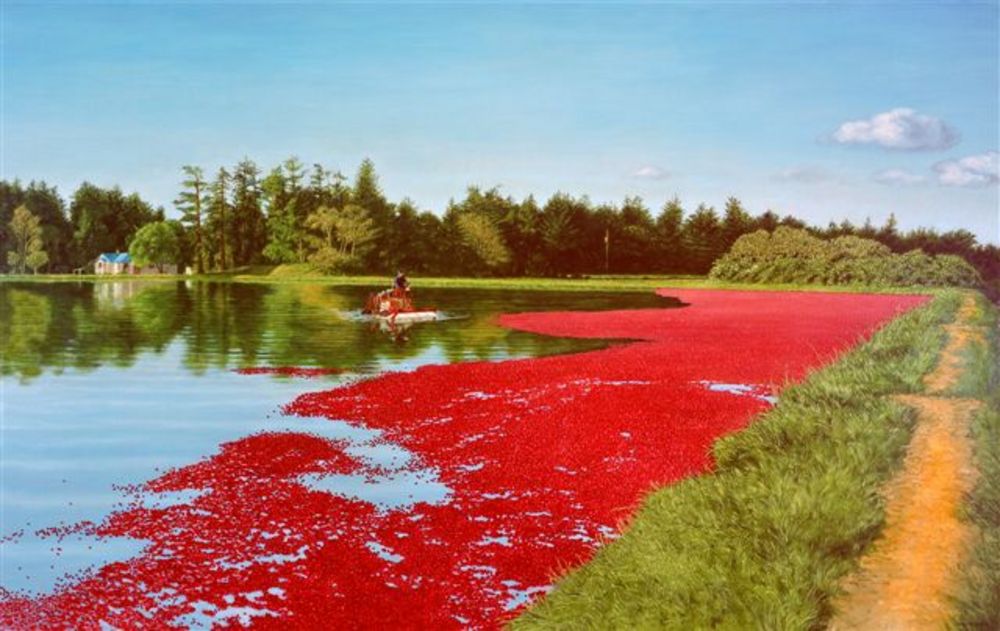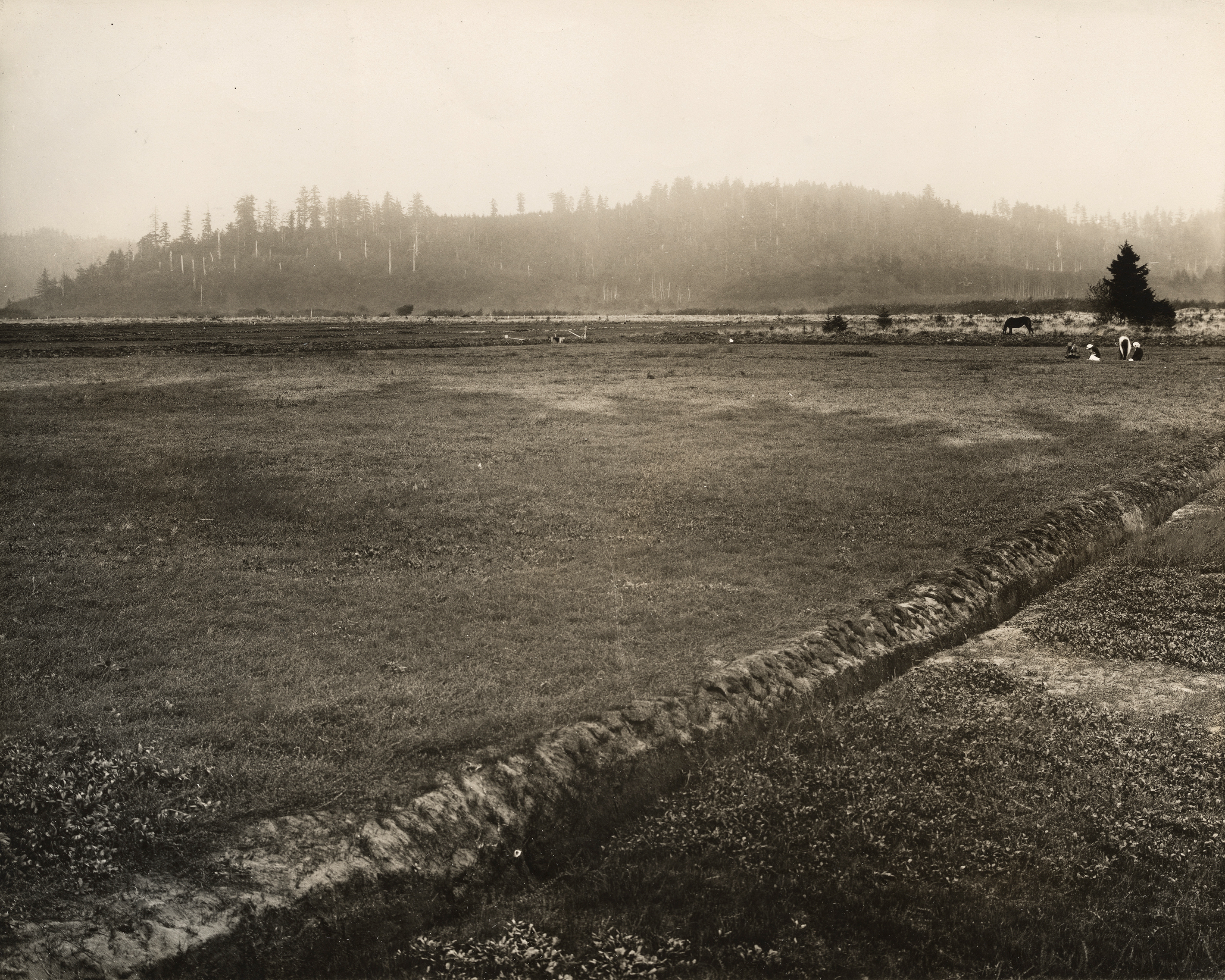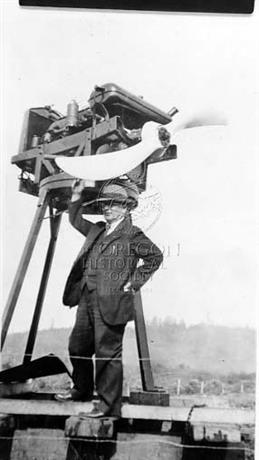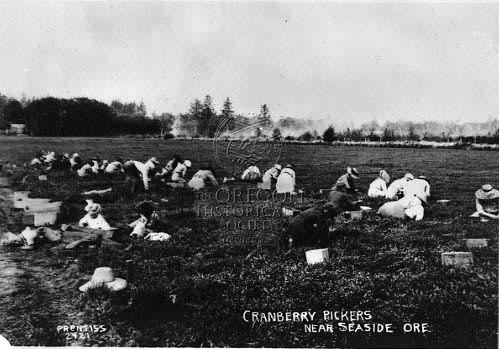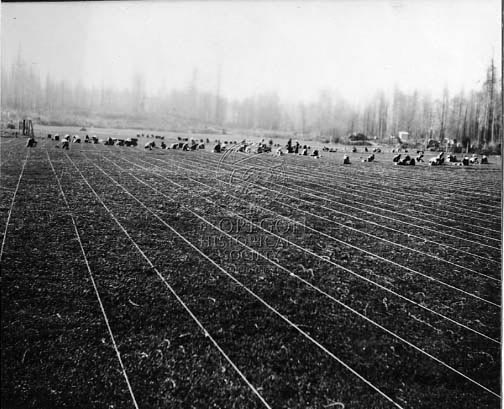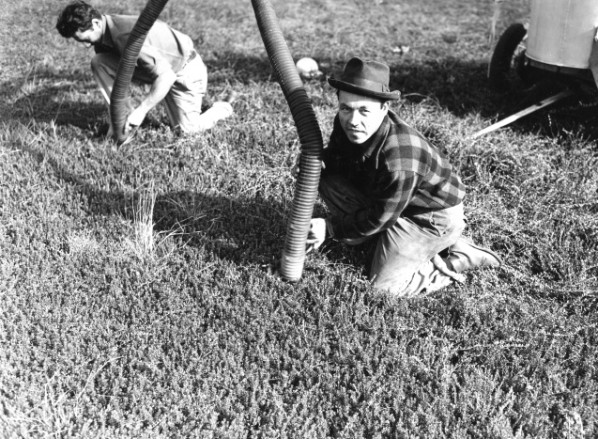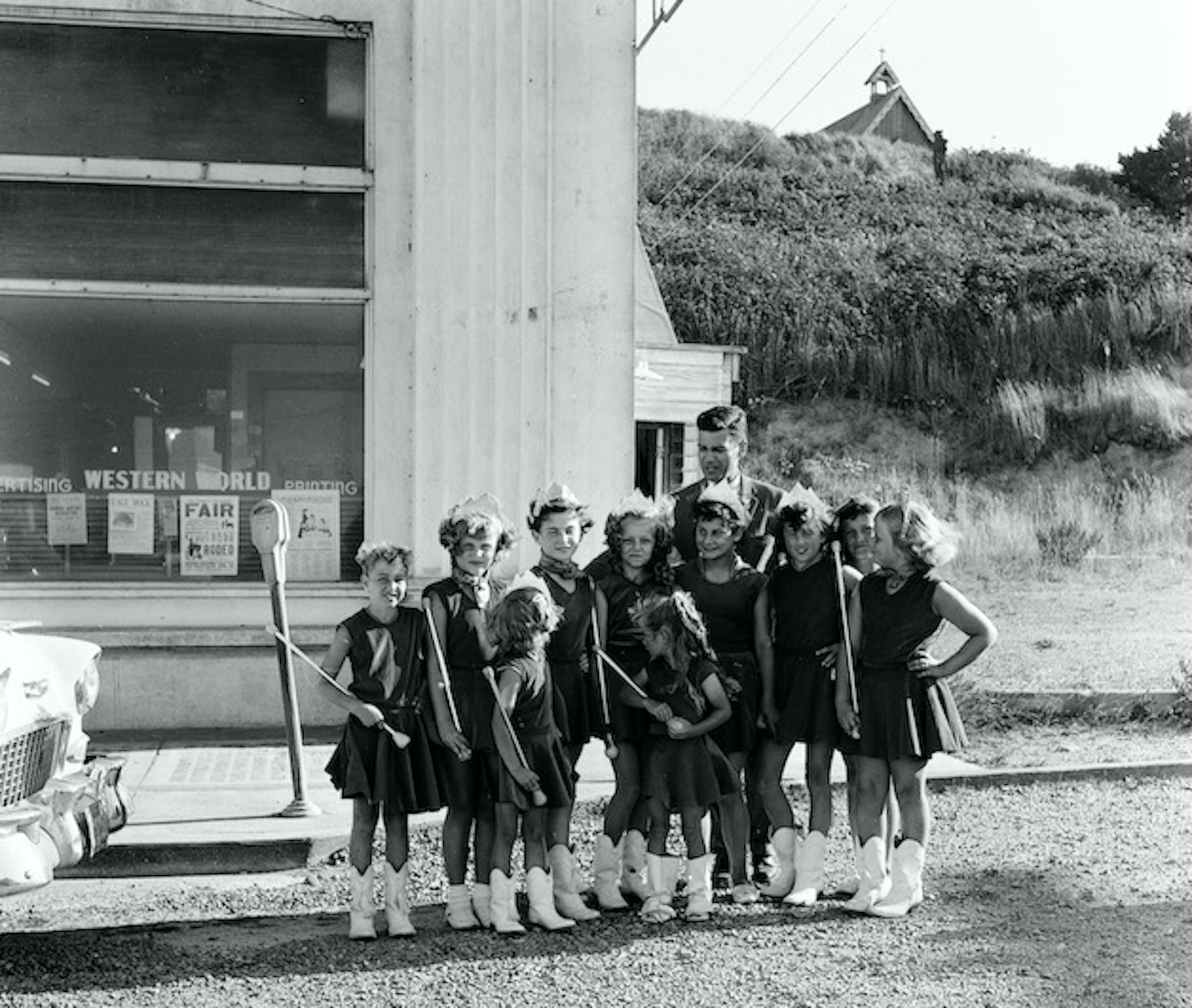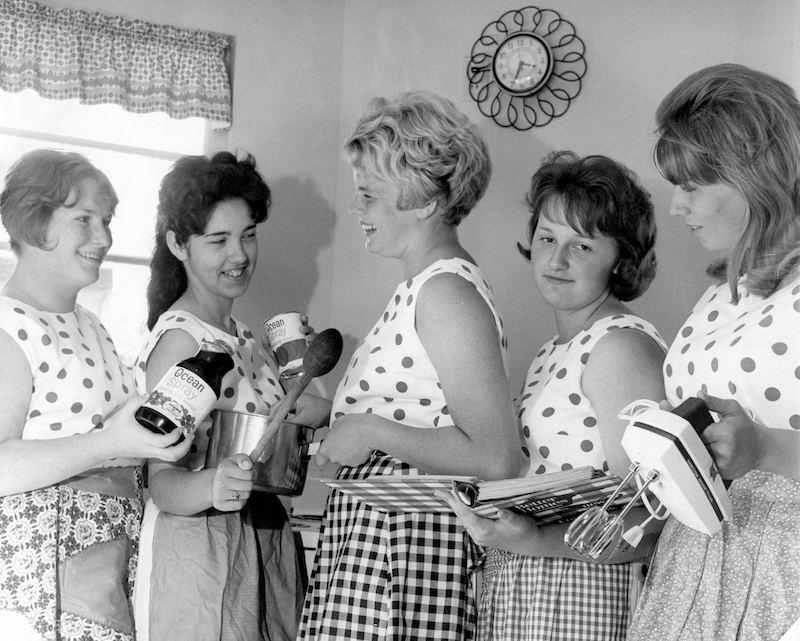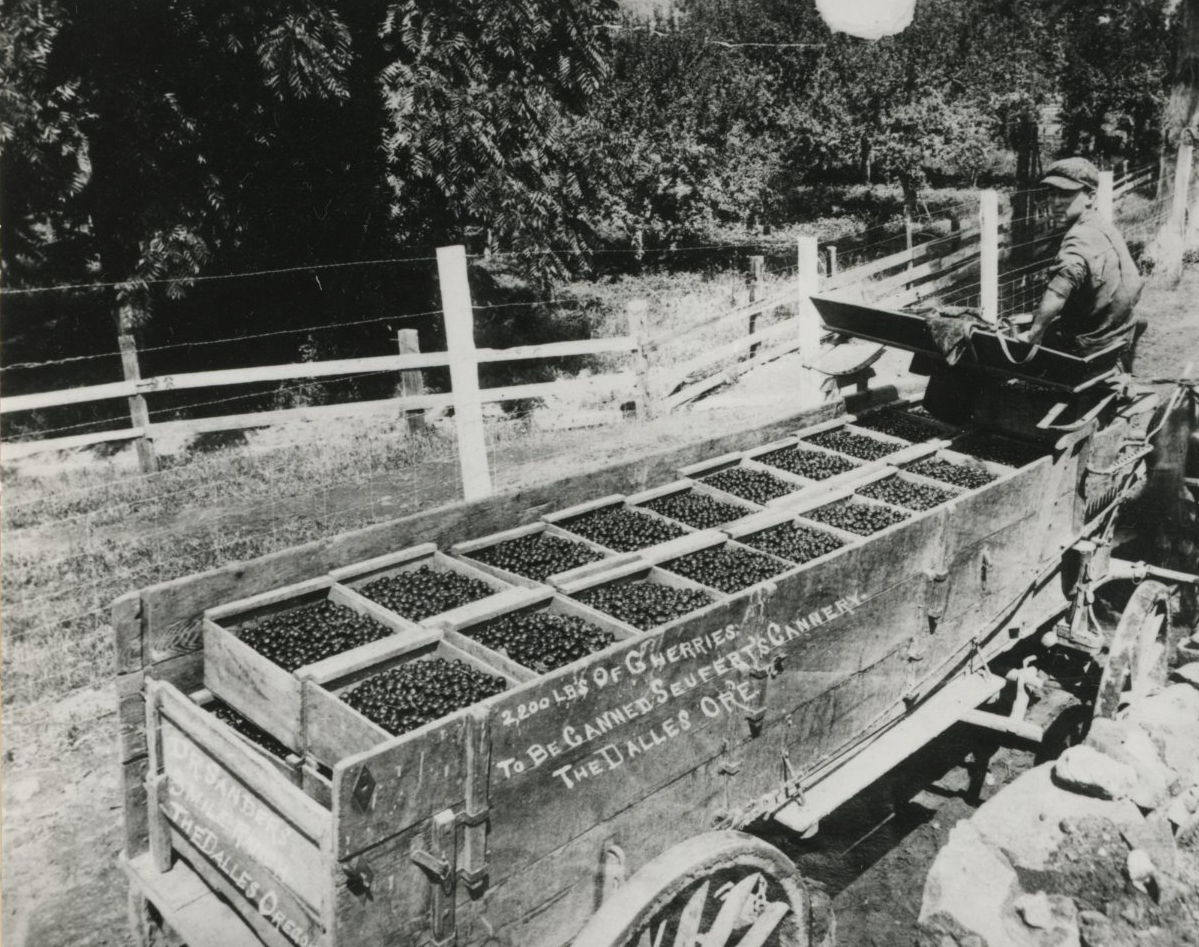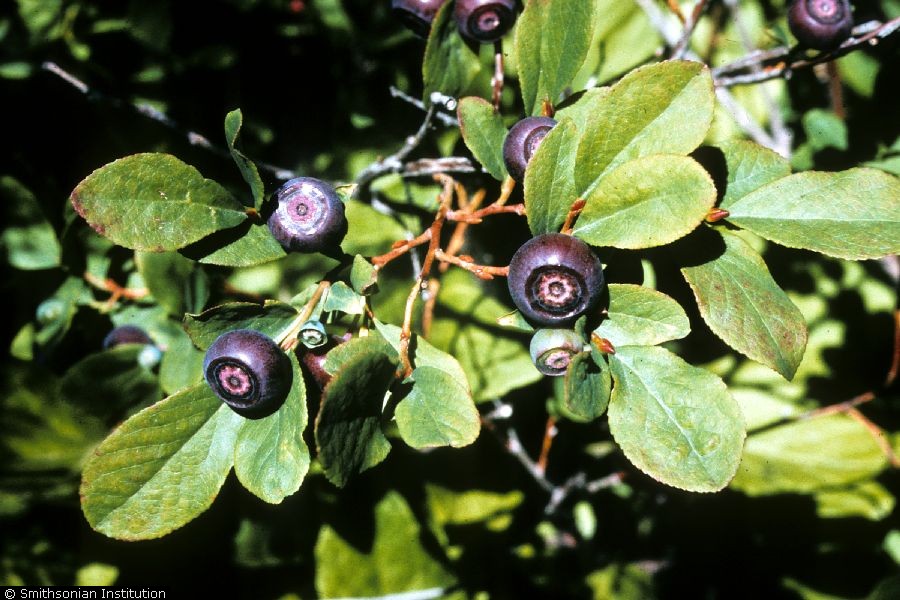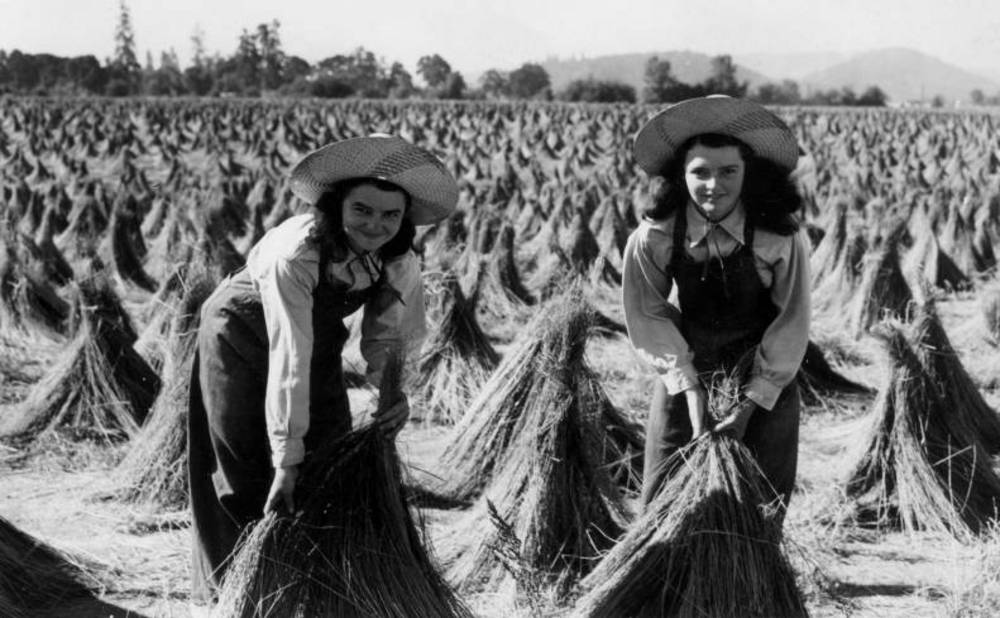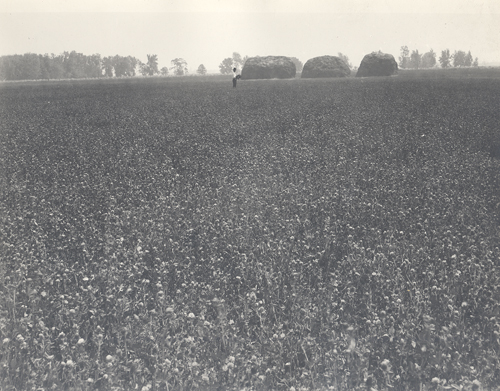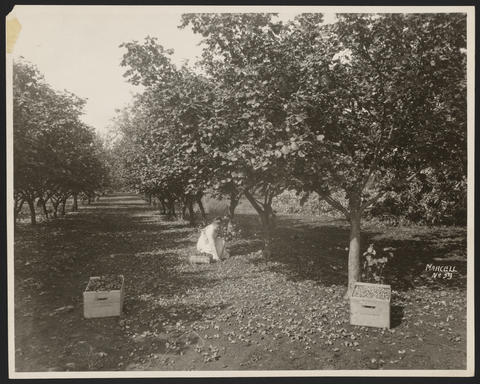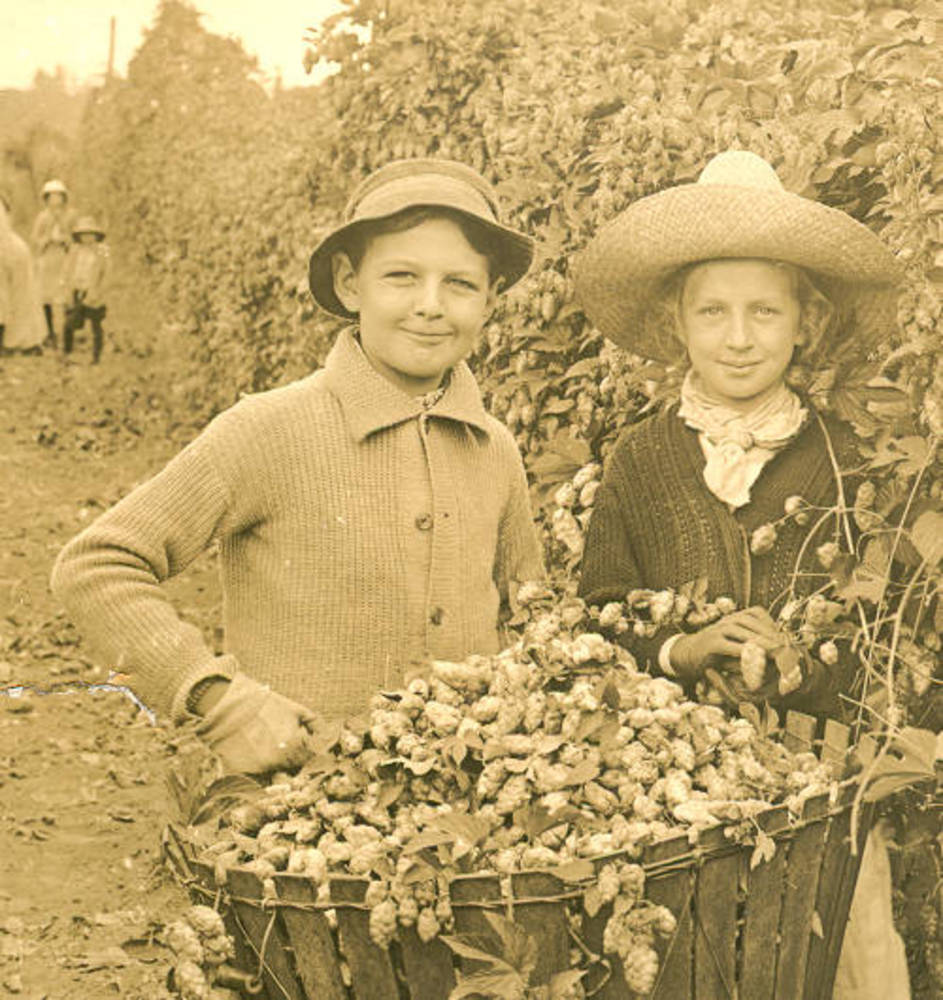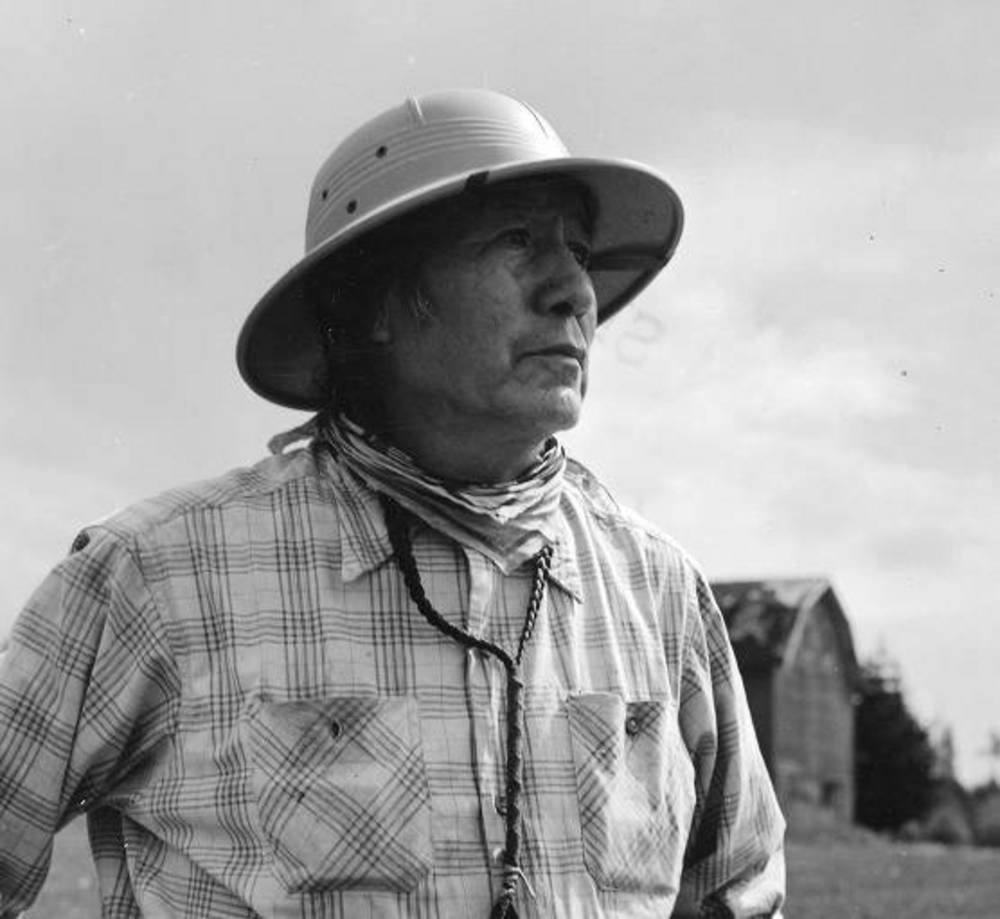The Oregon cranberry is prized for its deep red color, which growers say puts the red in the juice. Historically, native cranberries grew in the northwestern region of the state, harvested by Indigenous people who shared the fruit with explorers. White settlers later harvested wild cranberries because they were a good source of vitamin C, which prevents scurvy, and the berry's naturally waxy coating allowed for long keeping. Nearly 3,000 acres of cranberries are cultivated in Oregon, with production centered in the south coast towns of Bandon, Langlois, Sixes and Port Orford. Oregon growers produce approximately 40 million pounds of berries each year.
Today, Oregon's commercially cultivated cranberries account for approximately 7 percent of U.S. production, and the cranberry ranks twenty-third among Oregon's top fifty agricultural commodities. From 2006 to 2008, Oregon growers harvested between forty and forty-nine million pounds of berries per year. Cranberry cultivation in Oregon uses approximately 27,000 acres along the southern coast, in southern Coos and northern Curry counties.
Commercial cranberry farming was started in Oregon by Charles McFarlin, one of the many prospectors who came west looking for gold. In 1885, McFarlin gave up panning, migrated to Coos County, and planted the cranberry cuttings he brought from Massachusetts. Until the mid-twentieth century, harvesting was done by hand, with native people providing much of the labor. Workers carried scoops—baskets with combs on one side of the opening. They swept the comb through the vines to release the berries, which were collected in the basket.
The temperate climate along the southern Oregon coast affords a long growing season, giving the berries a darker pigmentation than berries grown in other states. West Coast growers have developed cranberry varieties that thrive in the sandy marine soil in Coos and Curry counties. Farmers keep bees or contract with regional beekeepers for pollination.
Cranberry beds are often called bogs because early eastern farmers cultivated berries in boggy wetlands. Oregon farmers use upland sloping terrain and a series of tiered fields. A manmade pond or reservoir at the base of the slope collects rainwater for use throughout the growing season. Elevated sides surrounding each field allow farmers to flood the beds at harvest time. The ripe berries float so that harvesters—machines resembling elevated tractors with a beater bar on the front—roll through the fields, beating the vines and knocking the berries loose.
Once they are loosened from the vine, the floating berries are pushed or pumped into trucks for transport. Berries are cleaned at the farm or after delivery at one of the dozen coastal receiving stations. Little of the harvest is sold as fresh fruit. In the early days of the industry, most berries were canned for sauce. At present, most berries are either juiced for concentrate or sweetened and dried.
Growers pursue natural pest control, flooding or sanding beds to repel harmful insects. They also preserve undeveloped land around cranberry beds and maintain habitat for wildlife, especially birds and bats, which eat insects and help farmers minimize the need for artificial pesticides. For many farmers, however, the windy conditions along the coast are a deterrent to fully organic farming. Cranberry vines are especially susceptible to invasive weeds, whose seeds travel easily on the wind.
Cranberry sales represent a significant agricultural revenue source for Coos and Curry counties, outpaced only by forest product and seafood sales. Bandon residents have celebrated the fall cranberry harvest since 1947 with the Bandon Cranberry Festival. Hosted by the Bandon Chamber of Commerce, festivities include a parade, live music, an open-air market, a football game, and the Cranberry Court.
-
!["Cranberry Harvest" oil painting by Kent Holloway, 1999.]()
Cranberry Harvest, painting of, by Kent Holloway, 1999.
"Cranberry Harvest" oil painting by Kent Holloway, 1999. From the collection of Debra Koehler and Bob Ochs used by permission of Peggy Powell
-
![]()
Daniel Mrotzek teaches an in-law to run a beater on a cranberry bog during the 2013 harvest..
Courtesy Susan Dimock, Bandon Historical Society
-
![]()
Cranberry bogs, near Astoria.
Oregon Historical Society Research Library, Org. Lot 78, B1F2
-
![]()
Machinist William Silvo, from Astoria, tests his frost eliminator at the Dellmore Cranberry Bog, 1932.
Oregon Historical Society Research Library, 014159
-
![Cranberry harvesting at Delmoor cranberry bogs, Clatsop Plains, 1932.]()
Cranberry harvesting, Clatsop Plains, 1932.
Cranberry harvesting at Delmoor cranberry bogs, Clatsop Plains, 1932. Oreg. State Univ. Archives, Ext. Svc. Photo Collec., P062:0565
-
![]()
Cranberry pickers, Seaside.
Oregon Historical Society Research Library, 003533
-
![]()
Cranberry pickers, Fish and Sons Bog, Bandon, 1938.
Oregon Historical Society Research Library, 000533
-
![Jim Olson using vacuum tube to harvest cranberries, 1946.]()
Cranberry harvesting, 1946.
Jim Olson using vacuum tube to harvest cranberries, 1946. Photo J.W. Scheel, Oreg. State Univ. Archives, Ext. and Exp. Sta. Comm, P120:2188
-
![August 1958]()
Sec. of State Mark Hatfield poses with Bandon's Cranberry Cadets outside the office of the Bandon Western World newspaper..
August 1958 Courtesy Bandon Historical Society
-
![]()
Members of the 1963 Bandon Cranberry Festival Court promote cooking with cranberries..
Courtesy Bandon Historical Society
-
![Cranberry (Vaccinium macrocarpon Aiton).]()
Cranberry.
Cranberry (Vaccinium macrocarpon Aiton). Photo Richard A. Howard, copyright Smithsonian Inst.
Related Entries
-
![Bandon]()
Bandon
Located at the mouth of the Coquille River in Coos County, Oregon, Band…
-
![Bing cherry]()
Bing cherry
Bing, perhaps the most famous and highly regarded sweet cherry in the w…
-
![Blueberries and Huckleberries]()
Blueberries and Huckleberries
Big, fat, store-bought, domesticated blueberries are as close as most O…
-
![Flax and Linen Industry of Oregon]()
Flax and Linen Industry of Oregon
From the mid-1840s until the 1950s, fields of blue-flowering flax flour…
-
![Grass seed industry]()
Grass seed industry
The Willamette Valley, with its temperate climate, wet winters, and ari…
-
![Hazelnuts]()
Hazelnuts
Hazelnuts, also called filberts, have provided food for Indigenous peop…
-
![Hop Industry]()
Hop Industry
Hops are perennial, cone-producing, climbing plants native to Europe, A…
-
![Native American Agricultural Labor]()
Native American Agricultural Labor
As early as the 1830s, when French Canadians associated with the Hudson…
Related Historical Records
Map This on the Oregon History WayFinder
The Oregon History Wayfinder is an interactive map that identifies significant places, people, and events in Oregon history.
Further Reading
"Oregon Agriculture Facts & Figures August 2018." Oregon Department of Agriculture. oregon/gov/ODA https://www.nass.usda.gov/Statistics_by_State/Oregon/Publications/facts_and_figures/facts_and_figures.pdf

